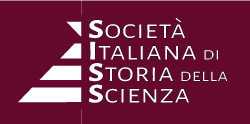Calendario eventi
a Venerdì 24 Giugno 2022
Visual and Material Culture of Microscopy in Seventeenth-Century Italy
This international workshop takes as a starting point the drawings and printed images that were created by seventeenth-century microscopists and their artists. In a conversation between experts on seventeenth-century lenses (in microscopes and telescopes), early modern scientific instruments, epistemic images before and after the introduction of the microscope, the Italian microscopic networks, and drawing as an observational art, this workshop aims at understanding better the visual strategies of depicting the previously unseen and unknown. How did one communicate something to scientific colleagues and a wider audience that has never been seen before? How did the first Italian microscopists visualize their observations and what kind of visual traditions did they choose to use? How did these earliest representations influence later visual depictions of microscopic observations? Did the early microscope dictate a specific observation regime, and how did that affect microscope and visualization practice? And how was it that Italy with its famous instrument makers, scientific practitioners, and visual artists stood at the start and center of an European-wide network of microscopic research throughout the seventeenth century?
PROGRAM
Wednesday 22 June
14:00-14:45: Welcome by Tiemen Cocquyt (Rijksmuseum Boerhaave) and Sietske Fransen (BHMPI)
14:45-15:30: Luca Tonetti (Università di Bologna): Insect anatomy unveiled: A first look at Marcello Malpighi's unpublished notes
coffee break
16:00-18:00: Marvin Bolt (Technische Universität Berlin/Corning Museum of Glass) and Michael Korey (Staatliche Kunstsammlungen Dresden): Brotherly Love: Telescopes and Microscopes
Thursday 23 June
Thursday an excursion to Florence takes place with side visits and a talk by Cammy Brothers (Northeastern University, Boston): Observing Michelangelo at Casa Buonarroti. For invited guests only.
Friday 24 June
11:30-12:15: Florike Egmond (Rome): Gessner and Cesi: comparing their visual studies of plants without and with the microscope (1550-60s and 1620s)
12:15-13:00: Pamela Mackenzie (KHI Florenz, A4Lab Berlin): Eggs, Seeds and Apricots: Microscopic Evidence in Seventeenth Century Generation Debates
14:00-14:45: Francesco Barreca (Università Statale di Milano): Instruments, Experimentation, and Narrative Building in the Saggi di Naturali Esperienze: a preliminary quantitative analysis
14:45-15:30: Christoph Lüthy (Radboud Universiteit, Nijmegen): Title tbc
Coffee Break
16:00-16:45: Wim van Egmond (microphotographer): Portraying Microbes
16:45-17:30: Final Remarks (Tiemen Cocquyt & Sietske Fransen)
For participation register via email: Questo indirizzo email è protetto dagli spambots. È necessario abilitare JavaScript per vederlo.
Organized by Sietske Fransen (BHMPI) and Tiemen Cocquyt (Rijkmuseum Boerhaave)
This workshop is organized by the Max Planck Research Group Visualizing Science in Media Revolutions in collaboration with Rijksmuseum Boerhaave as part of the NWO-funded project Visualizing the Unknown.


